Chemical and Science Manufacturer
Capturing interrelations of information for relevance can be difficult, even with NLP. More often companies will seek to work in taxonomy space in their journey toward richer implementations of knowledge graphs for automation adoption. Our consulting services leveraged this approach to provide a foundation stepping stone as the company sought to bring inherent knowledge graph capabilities into their business.
This global manufacturer had a sluggish system in place to comb through internet publications and look for key terms that might mark articles of interest to its divisions for competitive intelligence as a spawning point for innovative ideas. However, processes remained heavily manual and cumbersome. They realized that strong text matching and analysis was a missing component and decided to turn to taxonomies to mitigate and improve the process.
Semantic Arts quickly discovered that the key to success was faceted taxonomies. We worked with SMEs to determine what areas contained specific controlled vocabularies and specialized terminology. As a starting point, Semantic Arts created a series of taxonomies for each area for improved automation. Areas included:
• Products
• Industries
• Customers
• Capabilities
• Manufacturers
• Materials
• Processes
The tight focus of each facet allowed for SMEs and division experts to create very specific lists of terms. By using preferred labels and alternate labels (synonyms) for each, SA enabled what could be recognized and matched in a desired internet corpus. Initial implementation of the facets showed a higher level of matching to recognized terms of interest than an NLP algorithm achieved, created a higher confidence in the significance of the match, and left out many common or “stop” terms that the original method still picked up. A start of efficiency was realized.
Semantic Arts developed a more extended road map with the manufacturer to first refine and bulk up the taxonomy lists based on continued implementation and analysis. By implementing, the client’s intent will be to apply a simple semantic layer to relate and interconnect the taxonomy facets. This ontology model will allow even richer inferencing and matching of results based on relationships between terms (i.e., an article about a specific product will imply the involvement of certain manufacturers even if they are not explicitly mentioned).
In this case, a small step in a focused step into taxonomy re-classification is helping to open more understanding about the broader benefit while allowing for faster delivery of more pin-pointed research answers. In addition, building innovation pipelines of connected unstructured information are consistent with organizational goals of harmonizing data for greater strategic value. Although at initial phase, divisions in other parts of the enterprise have taken notice. Furthermore, interest has been expressed to leverage the unique reusability and interoperability semantic capabilities enable after this initial pilot.
Contact Us:
Overcome integration debt with proven semantic solutions.
Contact Semantic Arts, the experts in data-centric transformation, today!
Address: Semantic Arts, Inc.
123 N College Avenue Suite 218
Fort Collins, CO 80524
Email: [email protected]
Phone: (970) 490-2224

